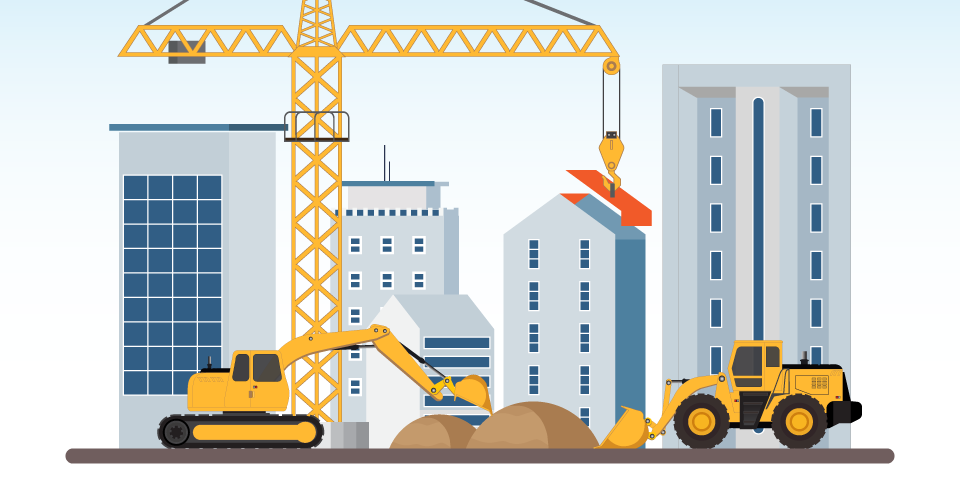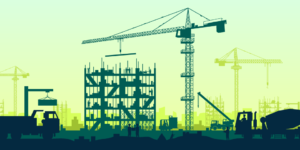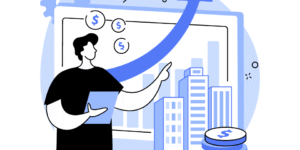The multifamily sector is taking the year off. Last year, a record number of apartment units—more than 585,000—were delivered to the market after several years of record new construction starts. Now, as the market works to absorb the glut of new supply, multifamily new construction starts have slowed considerably, with rising occupancy and stagnant or negative rent growth. This, of course, is a temporary problem. Overall, the multifamily sector is still severely undersupplied, with millions of units needed to meet the intense national demand for housing. Once the market absorbs the supply, activity will certainly ramp back up, but in the interim, multifamily developers have been forced to hit the pause button. But, multifamily developers don’t have to stand still. By thinking outside of the box, they can still find opportunities to build new housing this year and survive the slowdown.
Follow the Demand
Rooftops follow people, and for the last decade, people have been on the move. The Sunbelt has experienced the largest population growth in the nation, with 5 million people moving to the region over the last decade. This accounts for 80% of the total population growth in the last decade. In short, it’s significant. Unsurprisingly, new construction has followed the trend. Last year, more than 200,000 apartment units were delivered in the region, representing about a third of the total new construction deliveries in the country. As a result, these markets—which include Austin, Dallas, Miami, Orlando, Phoenix, and Atlanta—are now oversaturated. It will take some time for the supply to work its way into the market.
Demand, however, hasn’t dried up. While the Sunbelt is saturated with new supply—again, only temporarily—some markets continue to see stronger demand than supply. Rent growth and occupancy are key signs that a market might warrant new construction, so developers should follow the income. Currently, the Midwest and Northeast regions are producing significant rent gains. This year, Chicago and Kansas City rents are up 3.7%, Columbus rents are up 3.5%, and Philadelphia rents have increased 3.2%. These are also markets that did not see outsized construction in the last construction cycle, but continue to have strong demand for housing. In markets with more than a 5% increase in new supply last year, rental rates fell by more than 3%. Likewise, in many markets with rent growth, occupancy gains at also outpacing the national average. In Chicago, for example, occupancy reached historical highs at 95.5% last year, and in Kansas City, occupancy was 94.5%. That is an attractive combination for a multifamily developer.
Look at Alternative Residential Sectors
Multifamily is a broad asset class, but most developers operate within a specific niche, whether affordable housing, workforce housing, core, core-plus, luxury, and so on. Each niche is going to have different fundamentals. When brand new class-A multifamily rents fall, for example, affordable assets might be outperforming market expectations, as often happens in periods of economic dislocation. Currently, alternative residential asset classes like senior housing and student housing are enjoying heightened demand with limited new construction activity, a dynamic that could create new development opportunities.
In senior housing, new construction has fallen to its lowest levels in 16 years, following fallout from the pandemic when COVID outbreaks became common and dangerous in assisted living facilities. However, demand has recovered. At the end of last year, occupancy grew to 88%, and nearly 90% in secondary markets. The demand is in a good position to continue to grow. Over the next decade, the segment of the US population over the age of 80 is expected to grow 36%. With a limited new construction pipeline and rising demand, this asset class could be an opportunity for developers in the next few years.
Student housing has a similar dynamic. The asset class has faltered in recent years after significant supply growth, but this year, the market is rebounding. Now, rental rates have stabilized and outpace market-rate multifamily and new student university enrollment is up. Last year, improving fundamentals catalyzed a 43% growth in student housing transaction activity, and this year, transactions are expected to continue to grow. Both senior housing and student housing are entering a period of growth, which could support opportunity for new construction, even as the broader multifamily market is cooling off.
Pursue Conversion Projects
Not all new construction has to start with a raw land site. Some of the most exciting new projects coming to market are being converted from obsolete real estate. Specifically, multifamily conversion projects from underutilized office and retail properties are on the rise. These projects help to bring much-needed new units to market and utilizes a well-located site often already within a population center. This year, a record-breaking 71,000 new apartment units will be converted from former office properties. These projects now account for 42% of all adaptive reuse. Even better, they are happening in high-barrier-to-entry markets. New York City, Washington DC and Los Angeles lead the nation in office-to-residential conversion projects. Retail properties are also being converted into housing. There are currently 192 malls being converted into residential properties, including Flatiron Crossing in Colorado and The Arcade in Rhode Island.
Adaptability is critical to survival as a developer. Markets are always changing, and developers must follow demand. But, shifting multifamily strategies is no easy task. Developers need to learn the nuances of each new vertical to remain proactive to deliver a successful project and achieve their targeted outcomes. Leveraging automation and AI functionality can help make that possible. Modern real estate development software like Northspyre empowers your development team to make informed decisions across the development lifecycle using automation, analytics, and integrated technology.
As a result, developers can devote their attention, time, and resources to building new strategies that promise better outcomes. Developers can follow the demand and follow the yield to new projects and take advantage of every opportunity, even when it seems like the well is dry.
Book a Northspyre demo and learn how the platform can help you build reliable budgets and schedules starting in early project planning.



